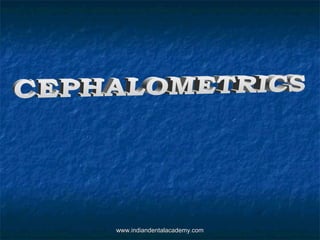This document provides information about cephalometry and lateral cephalometric radiography. It discusses the history of cephalometry from its origins in craniometry to its modern use of x-rays and lateral head films. The document outlines the standard equipment used in cephalometry including x-ray machines, cephalostats to position the head, and films. It also describes techniques for tracing cephalograms including landmarks, reference lines and angles. Different methods of cephalometric analysis are classified including those based on angles, distances, norms, and areas of analysis like dentoskeletal or soft tissues. Downs analysis is discussed as an example using angular and linear measurements to define normal skeletal and dental patterns.



































































































































